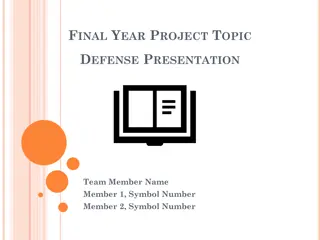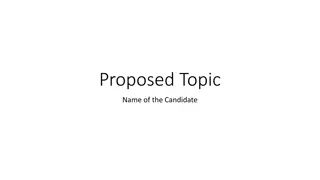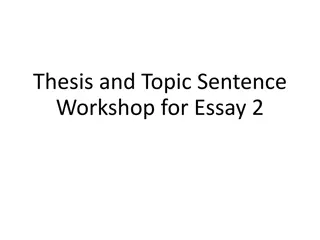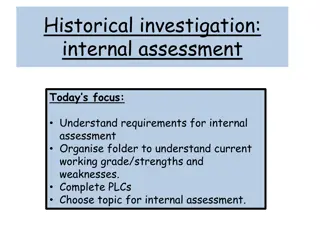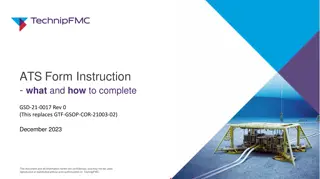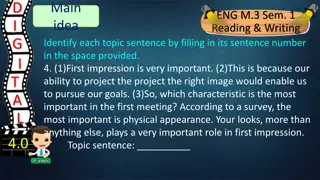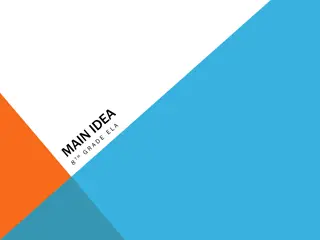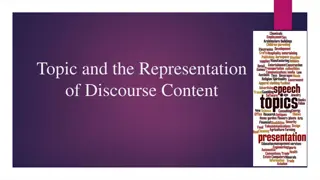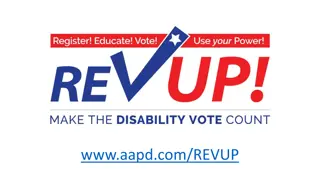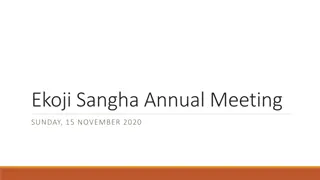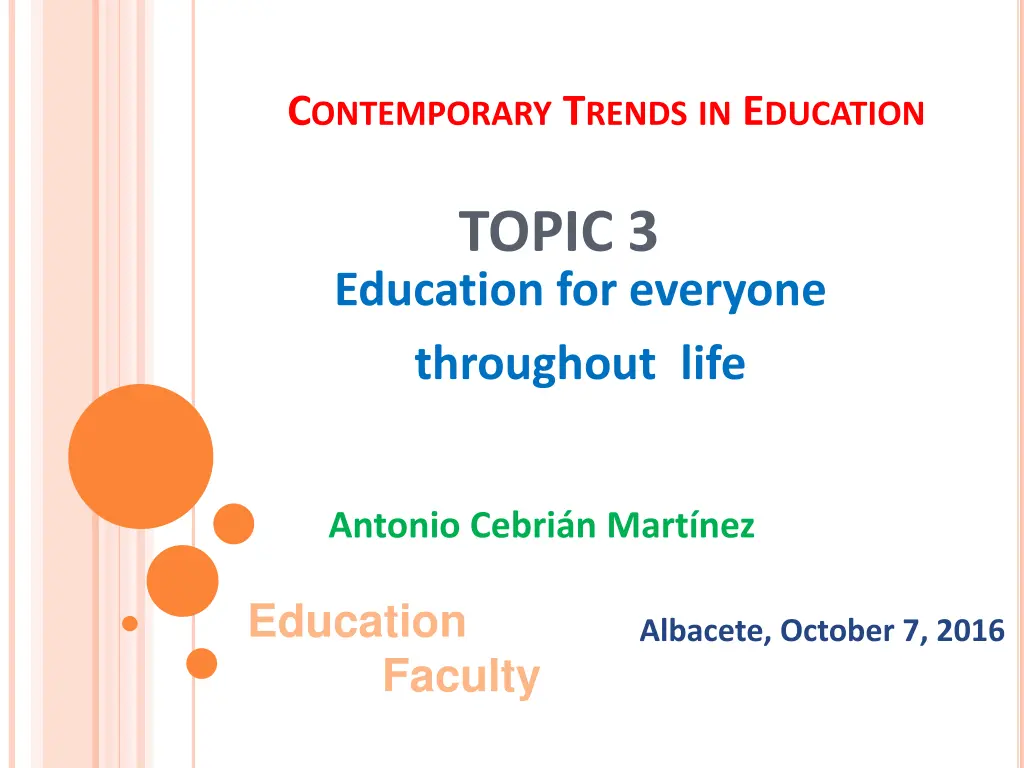
Lifelong Learning and Education for All: Understanding Contemporary Trends
Explore the multifaceted nature of the right to education, emphasizing lifelong learning and education for everyone throughout life. Delve into the concept of "Education throughout life" with a focus on ethical considerations and various approaches. Examine international treaties, challenges in implementation, and the integration of education as a human right.
Download Presentation

Please find below an Image/Link to download the presentation.
The content on the website is provided AS IS for your information and personal use only. It may not be sold, licensed, or shared on other websites without obtaining consent from the author. If you encounter any issues during the download, it is possible that the publisher has removed the file from their server.
You are allowed to download the files provided on this website for personal or commercial use, subject to the condition that they are used lawfully. All files are the property of their respective owners.
The content on the website is provided AS IS for your information and personal use only. It may not be sold, licensed, or shared on other websites without obtaining consent from the author.
E N D
Presentation Transcript
CONTEMPORARY TRENDS IN EDUCATION TOPIC 3 Education for everyone throughout life Antonio Cebri n Mart nez Education Albacete, October 7, 2016 Faculty
INDEX 1. Introduction 2. The multifaceted nature of the right to education 3. Lifelong learning and education throughout life 4. Understanding the concept of "Education throughout life": their approaches 5. Education for everyone throughout life as an ethical concept
1. INTRODUCTION Universal Declaration of Human Rights (1948) of the United Nations General Assembly Article 26: Right to education, free and compulsory elementary education and equal access to higher education Full development of personality, respect for human rights and fundamental freedoms and tolerance and peacekeeping Preferential right of parents to choose the kind of education for their children Unquestionable reference point in Spain Constitution Article 27
2. MULTIFACETED NATURE OF THE RIGHT TO EDUCATION Many facets in the implementation of this international law Report on Education in the World (2000): Clarifies concepts: education of children and adults, free ("basic education") Generalization of technical and vocational training among the population Equal opportunities to access higher education Select the most important international treaties on the right to education, give legal force (examples: International Covenant on Economic, Social and Cultural Rights of 1976 and Convention on the Rights of the Child, 1990)
2. MULTIFACETED NATURE OF THE RIGHT TO EDUCATION Not always the same translation to practice by the multiplicity of contexts and disparate starting points For example, basic conflicts that arise are ethnic, racial or religious problems High level of abstraction: political-educational priorities of a stage on other, quality role, position of the State, etc. Failure of expected accomplishments: low percentage of adult literacy of acceptable levels with school failure, unemployment, etc. High enrollment rate must be associated with a balance of educational quality Dimensions of study: Quantitative: more concrete being base on population counts Qualitative: more difficult and reduced to value
2. MULTIFACETED NATURE OF THE RIGHT TO EDUCATION World Bank: QUALITY EDUCATION SATISFACTION OF BASIC NEEDS OF STUDENTS TO BE PREPARED TO LEARN ACCESS TO RESOURCES MOTIVATED PROFESSIONALS EFFICIENT SYSTEMS
2. MULTIFACETED NATURE OF THE RIGHT TO EDUCATION World Conference on Education for everyone in Jomtien (1990): Purpose: universal access to primary education and reducing adult illiteracy by half by 2000 Responsibility for education throughout life to the entire society Real progress much more modest than expected World Education Forum in Dakar (2000): Purpose: To evaluate the implementation of the principle of education for everyone 2015: all children should be in school and adult literacy should be increased by 50% Horizontal extension of education to prevent inequalities Ensuring the learning needs of everyone through equal access to school programs
2. MULTIFACETED NATURE OF THE RIGHT TO EDUCATION World Conference on Education for Everyone Geneva (2001): Purpose: To improve the quality of education through the pursuit of social cohesion, the fight against inequalities, respect for cultural diversity and access to the knowledge society Need to learn to live together (connection with education for everyone) Quality of education Quality of education Quality of education
2. MULTIFACETED NATURE OF THE RIGHT TO EDUCATION Interpersonal extension of the right to education: Any citizen can access any kind of education Facilitate the integral development of the person: freedoms, rights, coexistence in a democratic society, ... Relationship principle of equal opportunities: different speeds of implementation. For example, Europe sets the target domain of 3 Community languages, continued renewal of qualifications or 100% of Internet access in schools (for other countries in which these are impossible, focus on the pursuit of universal schooling) Relevant duration of basic and compulsory education: Second half of the twentieth century: according to the budgetary capacity of states Today huge differences between countries persist (abstraction) Normal between 8-10 years Enormous differences between regions: Europe and North America 8-13 years; Africa, South America and Arab Countries 6-7 years
2. MULTIFACETED NATURE OF THE RIGHT TO EDUCATION Delors Report (1996): Four pillars of a structured educational system, reiterated at the World Education Forum in Dakar (2000) Closely linked to the right to education Education as an ongoing process that lasts a lifetime (equal opportunities) Flexible education at different stages of life (prevent differences) Learning to know and understand the reality Learning to do (vocational training) Learning to live together (concerning article 26 Universal Declaration) Learning to be (global process of integral development)
2. MULTIFACETED NATURE OF THE RIGHT TO EDUCATION World Conference on Education for Sustainable Development of Japan (2014): Learn today for a sustainable future Assess the implementation of Education for Sustainable Development Show initiatives, ideas, agents, networks and areas of action Introduce best practices in all areas of the world Transition to more respectful social and economic models to the environment Catalyst for the planning and implementation of transversal programs in areas such as climate change, biodiversity and reducing the risk of natural disasters Meet local, regional, national and global needs The search for a quality of teaching
3. LIFELONG LEARNING AND EDUCATION THROUGHOUT LIFE In recent decades there was a boom of term lifelong education. This concept is previous (1919) Within the History of Education coexist two theoretical ideas: education throughout life for an elite and universal education (current version) Continuing education, extensive learning at all stages of life Human being as educating is constantly exposed to more or less intentional actions that facilitate learning Closely related to the content of the universal right to education Democratization of education: Education for All and Education throughout life Momentum in the 60s by the debate about the direction of adult education
3. LIFELONG LEARNING AND EDUCATION THROUGHOUT LIFE International Commission for the Development of Education or Faure Commission (1972): Continuing education as a synonym for lifelong education Introduction of the concept of learning throughout life (or Lifelong Learning), similar to previous conceptualization Aims to overcome a concept of education too limited equated with schooling and had three consequences (Coombs, 1985): It is assumed that formal educational institutions could meet the needs of people During the school-age citizens Those who failed no longer had the option of being an educated person
3. LIFELONG LEARNING AND EDUCATION THROUGHOUT LIFE Lifelong learning concept: Equating the concept of learning and education as people since birth experience learning needs that evolve throughout their life Conception of the right to education close to access to adequate learning opportunities throughout life Attribution of educational nature to any minimally effective stimulation regardless of their level of intentionality Since the 90s guiding principle of the Community education, vocational training and youth
3. LIFELONG LEARNING AND EDUCATION THROUGHOUT LIFE Memorandum of the European Commission in 2000: Realization at individual and institutional level in all areas of public and private life Lifelong Learning Six messages accompanied by six targets respectively: Message Target New basic skills for everyone Ensure universal and continuing access to learning to live in society More investment in human resources Substantially increase investment Innovation in teaching and learning Develop effective methods and contexts Appraisal of Learning Improve the evaluation of participation in learning and results Redefining guidance and counseling services Ensure that any citizen has access to information and quality advice Approaching of learning to home Provide learning opportunities close to the interests of people Integrated in national legislation
3. LIFELONG LEARNING AND EDUCATION THROUGHOUT LIFE Lifelong learning Individual development Social Economic development development Cohesive and competitive society Satisfaction of the development needs of citizens
4. UNDERSTANDING THE CONCEPT 'EDUCATION THROUGHOUT THE LIFE: APPROACHES Learning needs linked to productive sectors: Delors Report: learning throughout life beyond the limits of the labor market Improving employability in a competitive market It takes great strength in the 80s to start on the agenda of economic restructuring Beginning: Training, initial and professional, which contribute to have a workplace Training for the first occupation or who has lost it Training for the prevention of technological or structural restructuring within companies Training for capacity development and performance optimization in everyday work Training for career development and access to new posts of responsibility Continuing education: continuing professional development through vocational training throughout the life of workers Recurrent education: the need for alternating periods of work and periods of training
4. UNDERSTANDING THE CONCEPT 'EDUCATION THROUGHOUT THE LIFE: APPROACHES Politics as usual way to convey the meaning of lifelong education into practice: Render operational a theory that can transform culture European Union: poor development policy to link education with productive sectors Treaty of Nice (2002) and other recent European regulations: emphasize the role of education and training qualifications and continuous retraining of workers White Paper of the European Commission "The teaching and learning. Towards the Learning Society (1995) "outlines five objectives to be achieved in the fields of education and training in Europe: Encourage the acquisition of new knowledge Bring formal educational institutions to the productive sectors Combat exclusion Develop proficiency in three Community languages Equating investment in training to investment in capital Treaty of Amsterdam (1997): vocational training and apprenticeship permanent and guiding principles of EU policy in education
4. UNDERSTANDING THE CONCEPT 'EDUCATION THROUGHOUT THE LIFE: APPROACHES Lisbon European Council (2000): Education must adapt to the demands of society and improve the level and quality of employment Throughout all stages of life Three components: creation of local learning centers, promotion of new basic skills and increased transparency of qualifications It urges member states to achieve objectives such as: Increased investment in human resources Increase in the number of people aged 18 to 24 with secondary education received further training Internet connection in all training centers Define new basic skills to be acquired through continuous training Encouraging mobility of students, faculty and research staff Promote a common European format for curricula vitae
4. UNDERSTANDING THE CONCEPT 'EDUCATION THROUGHOUT THE LIFE: APPROACHES Different models on the functionality of lifelong learning Individual and collective realization and social participation Market logic and productivity Postmodern theories about the end of social classes and economic models on the formation of human capital Critical pedagogy Learning in order to justice and social transformation Learning based on economic needs
4. UNDERSTANDING THE CONCEPT 'EDUCATION THROUGHOUT THE LIFE: APPROACHES Fernandez Soria defines three fundamental directions and eight distinctive notes of lifelong learning: Economic: defined previously Sociocultural: education helps people find their place in society Education: overcoming traditional boundaries of formal education Directions It is preventive rather than interventionist It is a task in and from civil society It is flexible It is subject to democratic imperative It must be preceded by a quality basic education It has to be linked to the education system but not integrated into it It is multidimensional It needs new strategies both individual and institutional Distinctive notes
5. EDUCATION FOR EVERYONE THROUGHOUT LIFE AS ETHICAL CONCEPT Deep ethical sense of the concept Education as a right that can only be done through social values of equality, tolerance, respect, understanding and peace Liberating practice and education as a right, not a coercive action Finding a cohesive citizenship Perspective adopted by the philosophy of education Educator sensitive to the feelings and identity of the other Social and open to the human experience of the individual character They conduct not possess an ethical nature if they had some kind of social impact In line with the Universal Declaration of Human Rights






